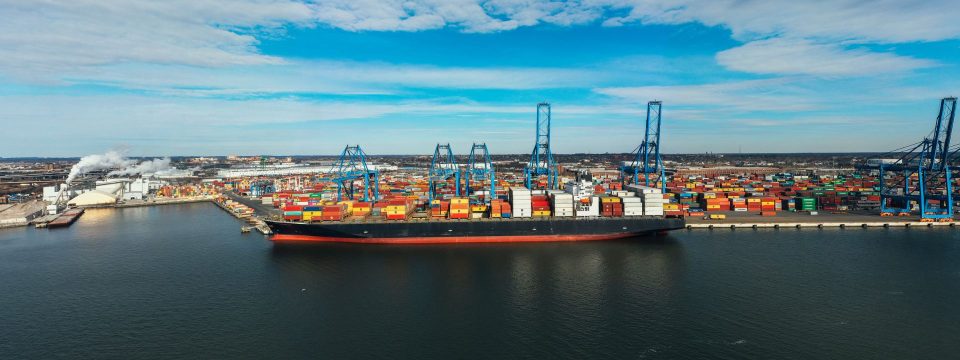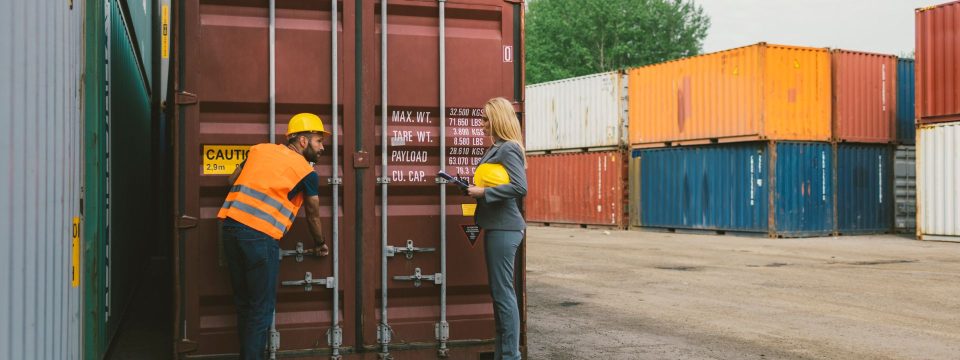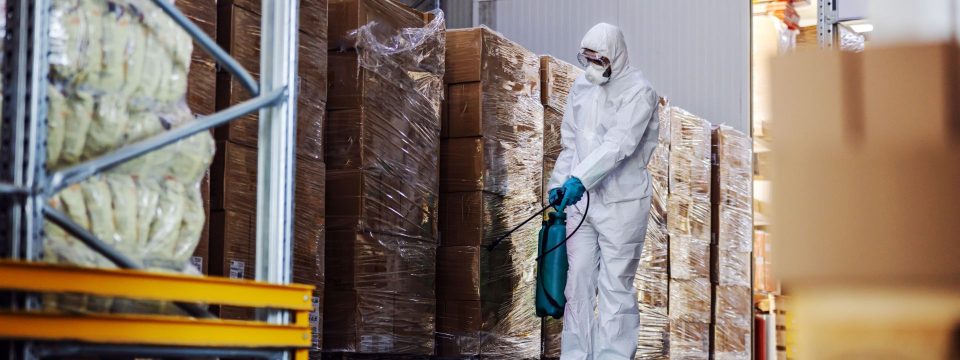Shipping Dangerous Goods: 5 Things You Need to Know
October 28, 2022 Beginners Guides

When shipping goods internationally it may surprise you to discover that your cargo is classed as dangerous or hazardous. For example, did you know that mobile phones, paint and perfume are considered dangerous for shipping purposes? Dangerous goods are those which pose a risk to health, safety, property, or the environment.
Complying with dangerous goods regulations is crucial when shipping hazardous cargo. Read on to discover the five things you need to know when shipping dangerous goods.
1. There are 9 Dangerous Goods Classes
There are nine primary classes of dangerous goods and additional sub-classes to appropriately describe the properties of all hazardous cargo. The nine classes are classified as follows:
Class 1: Explosives – Used to describe substances that are capable of producing hazardous amounts of heat, gas, light, sound, or smoke.
Class 2: Gases – Includes compressed, dissolved, liquefied, refrigerated gases and aerosols. Most gases are highly flammable and introduce risk when traveling.
Class 3: Flammable Liquids – As per the description, flammable liquids give off a flammable vapour that makes them highly dangerous.
Class 4: Flammable Solids – Solids that are flammable are highly combustible and should be handled with immediate care.
Class 5: Oxidizing Substances – These products may not be combustible in themselves but can contribute to the combustion of other hazardous substances.
Class 6: Toxic and Infectious Substances – Toxic substances are particularly dangerous to humans if inhaled, swallowed, or come into contact with skin. Infectious substances usually contain pathogens, including bacteria, viruses, parasites, or other agents which can cause disease in humans or animals upon contact.
Class 7: Radioactive Material – These materials are defined as any substance which contains atoms subject to radioactive decay. During this process, radioactive material can emit potentially harmful ionizing radiation.
Class 8: Corrosives – Known for chemical reactions that damage or destroy material upon contact.
Class 9: Miscellaneous Dangerous Goods – This category is used to classify cargo that does not fit into classes 1 to 8. This includes environmentally hazardous substances and elevated temperature substances.
Knowing your dangerous goods class will ensure packing and labeling requirements are met for shipping. You can identify the dangerous goods class by using our Material Safety Data Sheet (MSDS) document detailed below.
2. Goods Must Be Accompanied By An MSDS Document
In order to correctly identify your cargo class, you should request an MSDS document from your manufacturer or supplier. An MSDS document follows an internationally agreed standard and provides 16 sections that identify:
- Hazardous Class
- Ingredients and composition
- First aid and firefighting measurements
- Measures for handling, storage and transportation
- Reactivity, toxicity, ecological and disposal considerations
On the MSDS document, you will find your UN Number. The UN Numbers are four-digit numbers that identify dangerous goods, hazardous substances and articles (such as explosives, flammable liquids, toxic substances, etc.) in the framework of international transport.
3. Packing Must Conform To The Class Requirements
Once you have identified your hazardous class, UN Number and have your MSDS document, it is important that your goods are packaged correctly for transport. There is a label for each class or division to show what each hazard is. For example, toxic substances or radioactive material. These labels must appear on the outside of the package and must stay on the package while it’s in transit.
In addition to this, each UN Number and hazardous class carries its own packaging requirements. The quantity of dangerous goods you are sending should also be taken into account when arranging packaging. Once your goods are ready, contact your local forwarder who provides in-house dangerous goods expertise and they will be able to advise the appropriate packaging for your shipment.
4. Dangerous Goods Declaration and M041
When shipping dangerous goods it is vital that your shipment is accompanied with the correct declaration.
For sea shipments, a dangerous goods declaration needs to be completed known as an M041.
For air shipments, a similar document is required and can be downloaded here.
Once you have completed your declaration, send this back to your forwarder for review prior to shipping.
5. It’s Your Responsibility
If you are considering sending dangerous goods internationally, and the packaging, labeling, or documentation does not meet the requirements of the Civil Aviation Legislation, then you may be liable to heavy financial penalties.
As a shipper or importer, it is your responsibility to ensure your goods are classified correctly. The best thing you can do is contact your forwarder prior to shipping to ensure your obligations are met.
Did you know?
Over 20% of staff members at ICE are fully qualified to handle dangerous cargo. With regular training and experienced management, you can rest assured that your dangerous cargo is in good hands!
If you would like advice on shipping dangerous cargo please contact your ICE team member on 1300 CARGO1 or request a quote!
Request A Quoteor call us on 1300 227 461

We Consult. We Plan. We Deliver.
- CONSULT – We discuss your specific needs.
- PLAN – We develop a bespoke tailored plan that is cost-effective & efficient.
- DELIVER – We manage your shipment and keep you updated from beginning to end.


